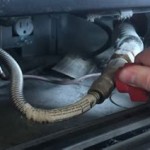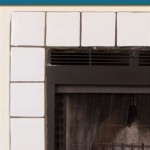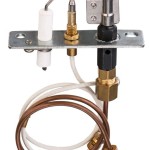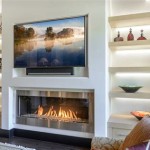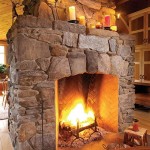Fireplace Brick Repair: A Do-It-Yourself Guide
Fireplaces, serving as both aesthetic focal points and functional heating sources, are subject to considerable wear and tear. The brickwork, enduring high temperatures and exposure to ash and soot, is particularly vulnerable to damage. While professional masonry services are available, many common fireplace brick issues can be addressed effectively through do-it-yourself repair. This article provides a detailed guide to undertaking such repairs, outlining essential steps, necessary materials, and critical safety considerations.
Before embarking on any repair project, a thorough assessment of the fireplace brick is crucial. Identifying the type and extent of the damage is paramount to selecting the appropriate repair methods and materials. Common issues include cracked bricks, crumbling mortar, and spalling (surface flaking). Furthermore, it's important to determine the underlying cause of the damage. Moisture infiltration, chimney obstructions, and improper fireplace usage can all contribute to brick deterioration. Addressing these root causes is essential to prevent recurrence of the problems after the repairs are completed.
Safety should be the priority in any fireplace repair project. The work area must be properly ventilated to minimize exposure to dust and fumes. Safety glasses are essential to protect the eyes from debris, and work gloves should be worn to safeguard the hands. A dust mask or respirator will prevent inhalation of harmful particles, especially when working with old mortar or deteriorated brick. It's also advisable to wear old clothing, as the repair process can be messy. Before starting any repair work, ensure the fireplace is cold and the ash has been removed. If the fireplace is gas-powered, the gas supply must be shut off at the valve. For wood-burning fireplaces, ensure no embers remain for at least 24 hours prior to starting repair procedures.
Essential Tools and Materials for Fireplace Brick Repair
A successful fireplace brick repair necessitates the right tools and materials. These will vary depending on the specific type and extent of damage being addressed. However, some core items are generally required:
Mortar Chisel and Hammer: These tools are used to remove old, crumbling mortar from between the bricks. A specialized mortar chisel, with its angled blade, is designed to effectively chip away at the mortar without damaging the surrounding bricks. A standard hammer provides the necessary force to drive the chisel.
Trowel: A trowel is used to apply new mortar to the brick joints. Different sizes and shapes of trowels are available, but a small pointing trowel is generally preferred for fireplace brick repair, as it allows for precise application of mortar in confined spaces.
Mixing Tub or Bucket: A mixing tub or bucket is required for mixing the mortar to the desired consistency. The size of the tub should be appropriate for the amount of mortar being mixed.
Mixing Hoe or Drill with Mixing Attachment: These tools are used to thoroughly mix the mortar with water. A mixing hoe is suitable for smaller batches of mortar, while a drill with a mixing attachment is more efficient for larger quantities.
Fireplace Mortar: This specialized mortar is formulated to withstand the high temperatures encountered in a fireplace. It differs from conventional mortar in its composition and heat resistance. Refractory cement is another options, and is particularly suitable for repairs in direct contact with the fire. Ensure that the mortar chosen is appropriate for the specific type of brick being repaired.
Grout Sponge: A grout sponge is used to clean excess mortar from the brick surfaces and smooth out the mortar joints.
Wire Brush: A wire brush is used to clean the brick surfaces and remove any loose debris before applying new mortar.
Brick Replacements (if needed): If one or more bricks are severely damaged, they will need to be replaced. Matching the existing bricks in terms of size, color, and texture is crucial for a seamless repair. Salvaged bricks from a similar era can be a good source of matching materials. If exact matches cannot be found, consider sourcing bricks from an architectural salvage yard or consulting with a masonry supplier.
Brick Cutting Tools (if needed): If the replacement bricks need to be cut to size, a brick hammer and masonry chisel or a wet saw with a diamond blade will be required.
Safety Glasses, Work Gloves, and Dust Mask/Respirator: These items are essential for personal safety during the repair process. As previously mentioned, prioritize safety throughout your project.
Repairing Crumbling Mortar Joints
Crumbling mortar joints are a common problem in fireplaces. The process of repairing these joints involves removing the old mortar, preparing the surface, and applying new mortar.
Removing Old Mortar: Using a mortar chisel and hammer, carefully chip away at the old mortar. Hold the chisel at an angle and strike it firmly with the hammer. Work slowly and deliberately to avoid damaging the surrounding bricks. Remove all loose and crumbling mortar, extending the cut back to sound mortar. Aim to remove the mortar to a depth of approximately twice the width of the mortar joint.
Cleaning the Joints: Once the old mortar has been removed, use a wire brush to clean the joints. Remove any loose debris, dust, and dirt. Dampen the joints with water to improve adhesion of the new mortar. This also helps to prevent the brick from drawing moisture out of the mortar too quickly, which can weaken the bond.
Mixing the Mortar: Mix the fireplace mortar according to the manufacturer's instructions. Add water gradually until the mortar reaches a thick, pasty consistency. The mortar should be workable but not too wet. Avoid mixing excessively large batches of mortar, as it can dry out before it can be used.
Applying the Mortar: Using a pointing trowel, carefully apply the new mortar to the joints. Press the mortar firmly into the joints to ensure good adhesion. Overfill the joints slightly, allowing the mortar to protrude slightly beyond the brick surface. This will allow for a smoother finish later.
Finishing the Joints: After the mortar has begun to set (typically after a few hours), use a damp grout sponge to clean excess mortar from the brick surfaces. Smooth out the joints to match the existing mortar joints. Different joint profiles can be created using a jointing tool or even a rounded stick. Choose a profile that matches the existing mortar joints in the fireplace.
Curing the Mortar: Allow the mortar to cure properly. This typically takes several days. Keep the mortar damp during the curing process by misting it with water periodically. Avoid using the fireplace until the mortar has fully cured.
Replacing Damaged Bricks
Replacing damaged bricks requires a slightly more involved process. The steps generally include removing the old brick, preparing the area, setting the new brick, and mortaring it into place.
Removing the Old Brick: Using a brick hammer and masonry chisel, carefully break apart the damaged brick. Start by chipping away at the mortar around the brick. Once the mortar is sufficiently weakened, carefully pry the brick out of the opening. Be careful not to damage the surrounding bricks during the removal process. A cold chisel and a hammer can be used to carefully break the brick into smaller, more manageable pieces for removal.
Preparing the Area: Clean the opening thoroughly. Remove any loose debris, dust, and dirt. Dampen the surrounding bricks with water. This helps the new mortar to adhere properly.
Applying Mortar to the New Brick: Apply a generous layer of mortar to the back and sides of the new brick. Ensure that the mortar is evenly distributed and that there are no gaps.
Setting the New Brick: Carefully insert the new brick into the opening. Press it firmly into place and ensure that it is aligned with the surrounding bricks. Use a level to ensure that the brick is properly seated. If necessary, tap the brick gently with a rubber mallet to adjust its position.
Mortaring the Joints: Fill the mortar joints around the new brick with mortar. Use a pointing trowel to apply the mortar firmly into the joints. Overfill the joints slightly to allow for a smoother finish.
Finishing the Joints: After the mortar has begun to set, use a damp grout sponge to clean excess mortar from the brick surfaces. Smooth out the joints to match the existing mortar joints. Cure the mortar properly by keeping it damp for several days.
Following these detailed steps will help ensure a successful fireplace brick repair, restoring both the functionality and aesthetic appeal of the fireplace. Regular inspection and prompt attention to minor damage will prevent more significant problems from developing, extending the lifespan of the fireplace.

Diy Chimney Masonry Dangers Full Service

How To Plaster A Brick Fireplace So Much Better With Age

How To Fix Crumbling Chimney Mortar 13 Steps

Easily Solve These Common Chimney Repair Problems Chimneysaver

Diy Concrete Fireplace Makeover Before After Cherished Bliss

Diy Masonry Chimney Repair Gaithersburg Md Service

Repairing Your Brick Chimney Part 4 Repair And Replacement Of Bricks

Brick Fireplace Makeover Before And After House Of Hipsters

Opening A Bricked Up Fireplace Diyers Guide Kezzabeth Diy Renovation Blog

An Inexperienced Mason Can Cause Chimney Restoration Mistakes

